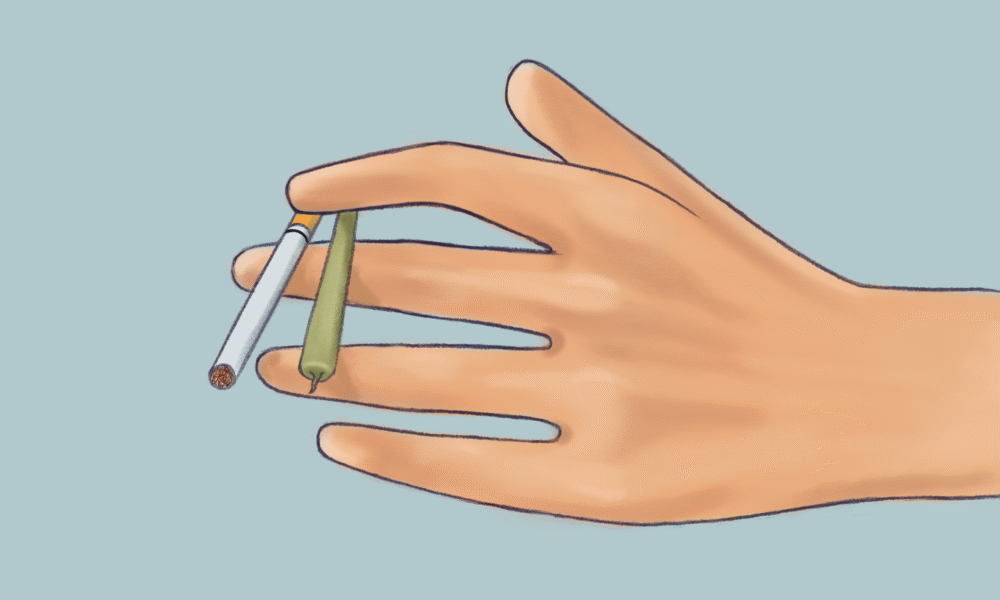Around 70 per cent of people who use cannabis have been found to use nicotine and tobacco products (NTP) as well. This trend is similarly observed among pregnant people. While both NTP and cannabis use during pregnancy have individually been shown to negatively impact pregnancy outcomes—such as preterm birth for the former, and increased risk of stillbirth for the latter—some McGill researchers are interested in the impacts of exposure to both of these products while in utero.
In a recent review published in Drug and Alcohol Dependence Reports, Rachel A. Rabin, an associate professor in McGill’s Department of Psychiatry, and her colleagues surveyed the existing literature on the effects of using both cannabis and tobacco during pregnancy. Specifically, they examined the neonatal, behavioural, physiological, and cognitive outcomes for the children of people who co-used while expecting. They hypothesized that these products would interact synergistically, exacerbating the existing negative effects of using them individually.
Co-exposure appeared to have stronger effects than individual substance exposure across nearly all categories. For neonatal outcomes, infants had an increased risk of impaired physical development and birth malformations. For behavioural changes, researchers in the reviewed studies found an increase in externalizing symptoms, such as aggression and impulsivity, and internalizing symptoms such as anxiety and depression. For physiological outcomes, co-exposure was linked to lower cortisol levels—suggesting issues in stress regulation—as well as changes to biomarkers of immune and inflammation reactions. While the review did not find any cognitive impacts of co-use, Rabin noted that this could be due to methodological limitations in existing studies.
“Our conclusion was that the [cognitive] data’s not really good, so I wouldn’t necessarily believe that finding, but that’s what the data to date is saying,” Rabin said in an interview with The Tribune. “The studies were mostly these large cohort studies that didn’t do a very good job characterizing cannabis use. And they also were conducted, I think, in the ‘80s when cannabis potency was very, very different than the cannabis used today.”
Rabin’s interest in the subject emerged long before her work on this review. She explained how, in her PhD research, she examined people going through cannabis withdrawal. Her study found that people who used tobacco while abstaining from cannabis actually experienced greater cannabis withdrawal symptoms than those who abstained from either substance—a finding that further confirms the interactions between cannabis and NTP.
From there, Rabin’s interest in cannabis and tobacco’s interactions continued, which eventually led her to look at the effects of co-use during pregnancy.
“We’re kind of just looking across the lifespan,” she said.
Given the dangers of engaging in substance co-use while pregnant, it is essential that we have viable treatment options for affected children and that we take measures to prevent such use in the first place. There appears to be a discrepancy in the general public’s understanding of the risks associated with NTP versus cannabis use.
“I think women are aware of the risks of using a nicotine or tobacco product while pregnant,” Rabin said. “For some reason, they just interpret [cannabis] as being more safe. And so a lot of women are using cannabis, especially in the first trimester to help with symptoms like nausea or problems sleeping. And if they have pain, then we’re seeing a trend that women prefer to use cannabis rather than some types of medications [….] The intervention, I think, is really just educating women at this point to understand some of the harms related to using cannabis while pregnant.”
The prevalence of cannabis and NTP co-use during pregnancy speaks not only to the need to continue researching their synergistic effects, but also to communicate these findings in a way that everyone—whether expecting or not—can understand. With this, we can contribute to children’s safety and longevity for generations to come.
A previous version of this article stated that Dr. Rabin’s PhD research examined people going through tobacco withdrawal and found that those who used cannabis while abstaining from tobacco experienced greater withdrawal symptoms. In fact, her research examined cannabis withdrawal, and found that those who used tobacco while abstaining from cannabis experienced greater withdrawal symptoms. The Tribune regrets the errors.






